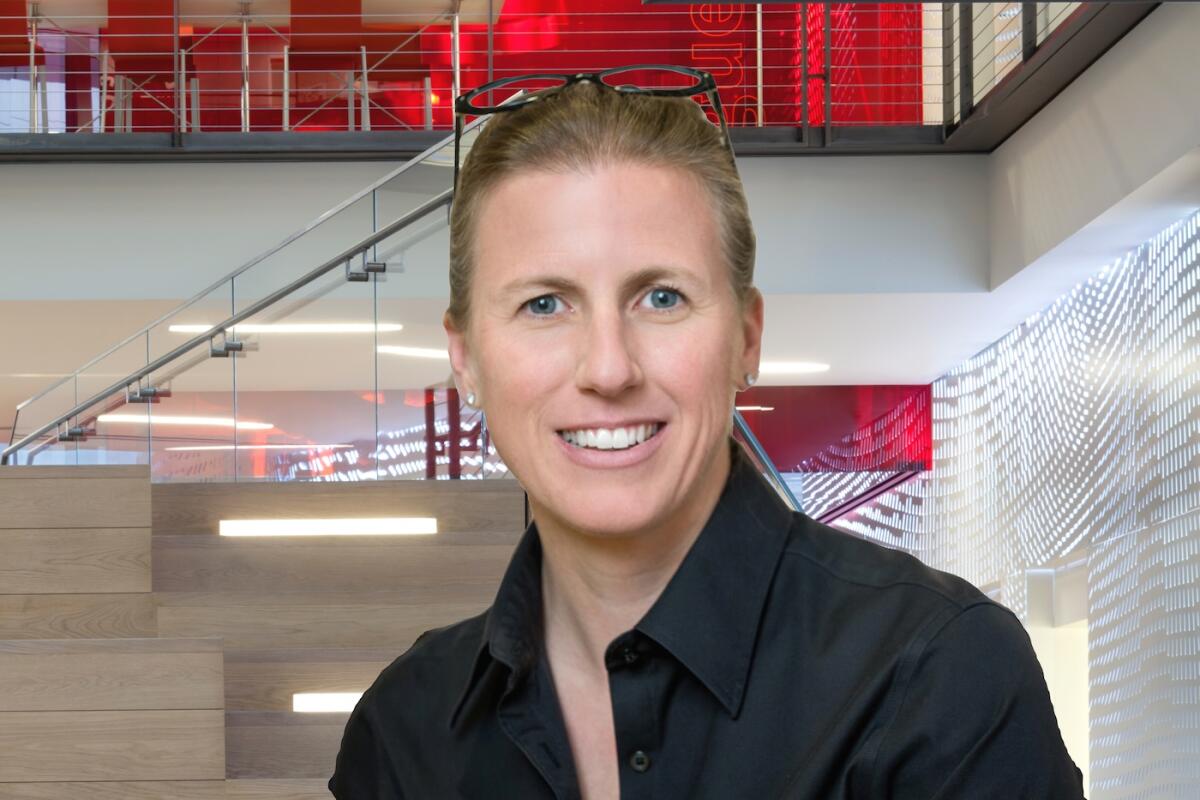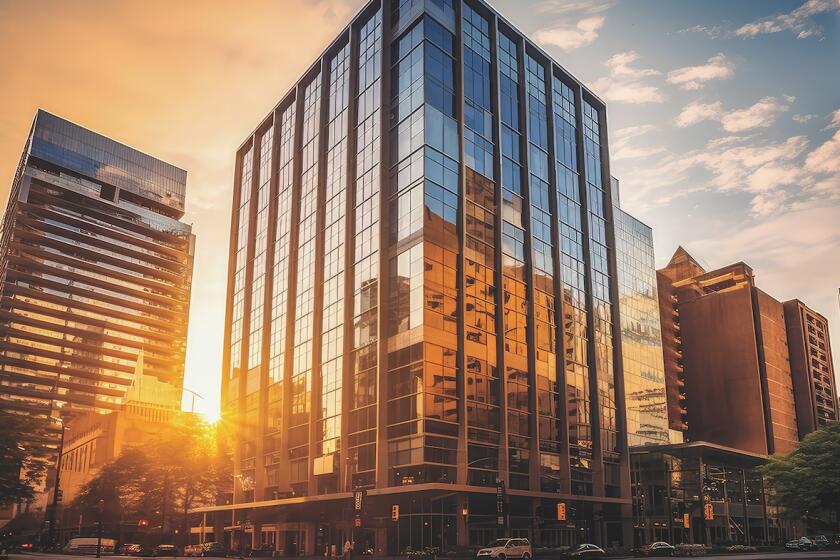New Developments are Redefining the Local Landscape

Deal-makers and change-creators in Southern California’s CRE world discuss the challenges, opportunities and bright future of the business sector in the region and beyond.
From the coast to the mountains, few regions in the United States have as many opportunities for growth – and as many challenges – as Southern California from a build-out perspective. With costs rising, a land and housing shortage that can be seen as fundamental to the area’s DNA and even seismic complexities, those in the commercial real estate sector who build L.A.’s megaprojects to multiple housing units face a path as complex as any skyscraper blueprint.
Yet SoCal companies have moved forward with a multitude of projects ranging from the nearly completed $2-billion Intuit Dome in Inglewood to mixed-use office projects, entertainment studios, hospitals, student housing developments and rail line expansions. These investments also support thousands of jobs for the region’s architecture firms and general contractors, along with the engineering firms and trades.
L.A. Times B2B Publishing is proud to present “Top Law Firms,” a list of the 100 leading law firms in Los Angeles County. The list is ranked by the number of attorneys in Los Angeles County offices. To compile the list, B2B Publishing surveyed local, regional and national law firms and asked them to provide information about the number of attorneys and practice groups in their local offices.
Land is at a premium in Los Angeles and commercial real estate professionals frequently need to find creative ways to reposition properties. For example, Exposition Park near USC has undergone a major transformation that continues to bring new life to the area. The Los Angeles Sports Arena was demolished to make room for BMO Stadium, which now hosts both men’s and women’s professional soccer teams. Additionally, the $1-billion Lucas Museum of Narrative Art is projected to open next year. It’s a vital redevelopment for the region’s arts and entertainment.
Downtown Los Angeles-based architectural giant Gensler has a hand in many of the region’s most recognized projects. The firm, which is generally recognized as one of the largest in the world, generated $239 million in local revenue last year across its offices in downtown and Newport Beach, which made it the highest-ranked company on this year’s L.A. Times B2B Publishing list of top architecture firms.

“We’re lucky to say that our business is multi-dimensional. We do a great job of bringing expertise across a wide spectrum,” said Kelly Farrell, a managing director of Gensler’s Los Angeles office and the firm’s global leader of the residential practice. “That expertise involves building connections to the way that we live, work and play.”
New studio development projects are key to sustaining the region’s growing entertainment industry, which has been bolstered by demand for streaming content from a plethora of content providers. Studio space is at a premium and there has been very little new studio construction in Los Angeles over the past two decades. Gensler is the architect for Ranch Lot Studios, a 926,000-square-foot campus developed by Worthe Real Estate Group and Stockbridge that will be fully leased to Warner Bros. It will add 16 soundstages for the production giant, bringing its total to 56 locally-based soundstages upon completion.
Other soundstage development plans include Hackman Capital’s plans for nearly a million square feet of new studio and office space at the Television City campus in the Beverly Grove area designed by Foster + Partners. There are also proposals for renovations and additions at the Radford Studio Center in Studio City and the Fox Studio Lot in Century City.
Entertainment is just one of the sectors that is expanding. Farrell noted that the firm is working in Pasadena to figure out the kinds of support that life science companies need to stay and build their business near California Institute of Technology and the Jet Propulsion Laboratory. The region’s life science industry has historically been dwarfed by the robust biotech sector in San Diego and the Bay Area, but the Los Angeles region has potential to create new high-paying jobs if it could better support the needs of these companies.

Making Moves
These projects require more than just office and studio space. They require employees who can afford to live and work in the area. High costs of living and difficulty with mobility are especially sensitive topics in Los Angeles, where cars are the dominant form of transportation, especially compared with transit-rich cities like New York or Chicago.
Gensler is pursuing multiple transit projects: One is a large-scale project to work with Metro on a connection between the San Fernando Valley and the Westside along the Sepulveda Corridor. Smaller projects include working with the city of Los Angeles to reimagine a one-mile stretch of Hollywood Boulevard that will expand space for pedestrians and bicycles while leaving space for cars. If successful, the Hollywood project will be expanded to a larger stretch of the boulevard.
In Los Angeles, some transit projects are intimately connected to housing construction because incentives are provided near mass transit centers such as Metro stops or bus plazas. West Edge in West Los Angeles is an example of a recent mixed-use development that has office, housing and retail elements alongside immediate access to the Metro stop at the Bundy Station on the Expo Line.
“We’re at a massive deficit for housing units,” said Farrell. “There’s no silver bullet. We as a firm support an abundant housing model. We’re building across the whole spectrum,” she said.
Other forms of housing include student housing. Gensler is working with local community colleges to help secure housing for students who are struggling to find housing and with a non-profit that provides housing and support services for veterans and market rate housing projects.
“There are a lot of people committed to building housing. Momentum builds momentum. Los Angeles is a city that can constantly redefine itself. It brought its downtown to life,” said Farrell.
A Downsizing Office Market: A Golden Opportunity?
Gensler moved its office from Santa Monica to Downtown Los Angeles, where it occupies about 100,000 square feet. It recently reinvested in its own office to provide more flexible workspace. The third floor reopened and there are plans to renovate three more floors. The investment comes at a time when some firms are downsizing office needs and vacancy rates have increased.
“There’s something really powerful about a well designed space. Offices are more versatile than ever,” said Farrell.
Nevertheless, the office market as a whole is one of the weakest segments of commercial real estate. It hasn’t rebounded nearly as quickly from the COVID-19 pandemic as the retail and hospitality sectors. Employees have embraced hybrid and remote work models. These new working arrangements have led to opportunities to acquire buildings at a discount to replacement cost due to softer fundamentals compared with other real estate asset classes, such as industrial and multi-family.
“Demand for office buildings continues to increase, as investors view current values as a generational buying opportunity. More institutional investors are actively evaluating acquisitions, primarily in premium markets and locations where they feel the office recovery will occur at a quicker pace,” said Stephen Somer, managing director at Eastdil Secured, a commercial brokerage firm that handles sales only.
The firm has recently completed local transactions that include Brookfield’s bankruptcy sale of 777 Figueroa St. in DTLA and the Pen Factory in Santa Monica, which was acquired by JPMorgan Chase for $178 million. The Pen Factory is 100% leased to GoodRx and Activision. These transactions demonstrate that investors are still seeking assets in strong markets.
“Additionally, there seems to be a direct correlation between physical occupancy and worker compensation, especially with those employees that have bonus or profit participation structures,” added Somer.
-David Nusbaum
